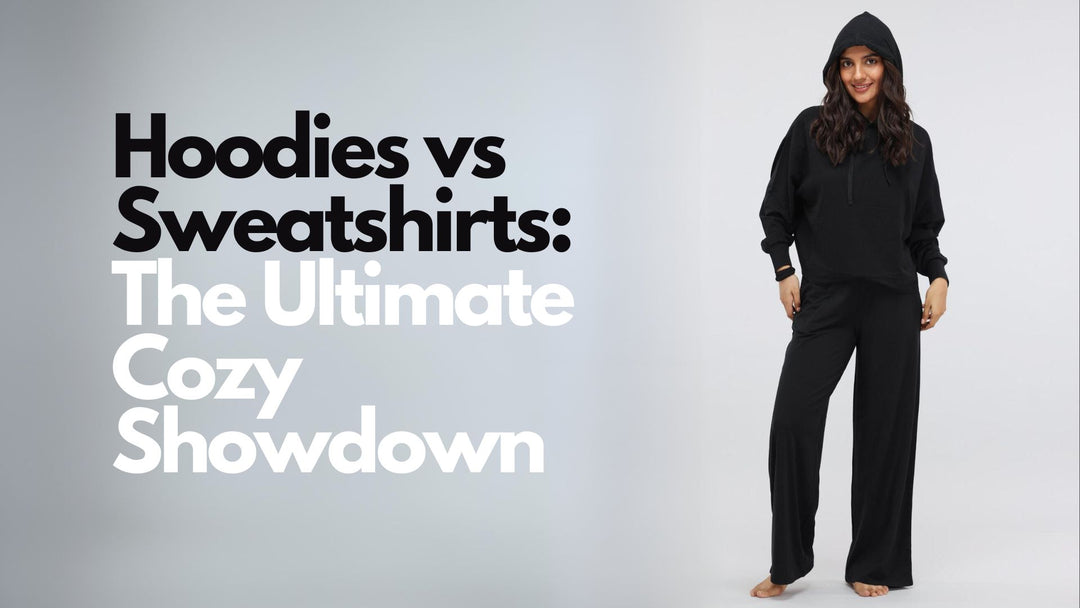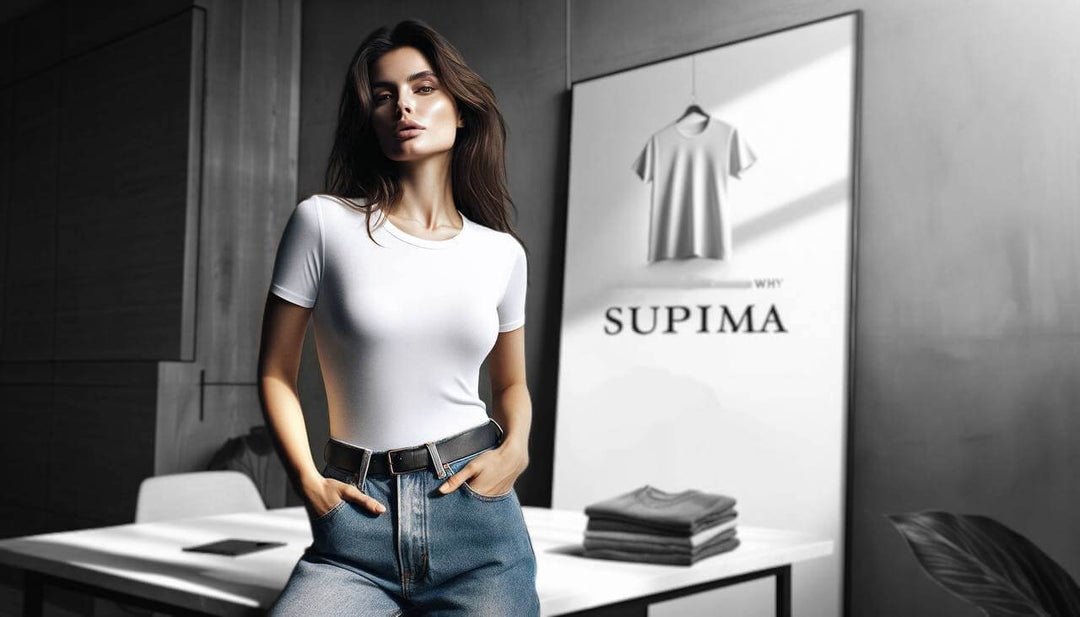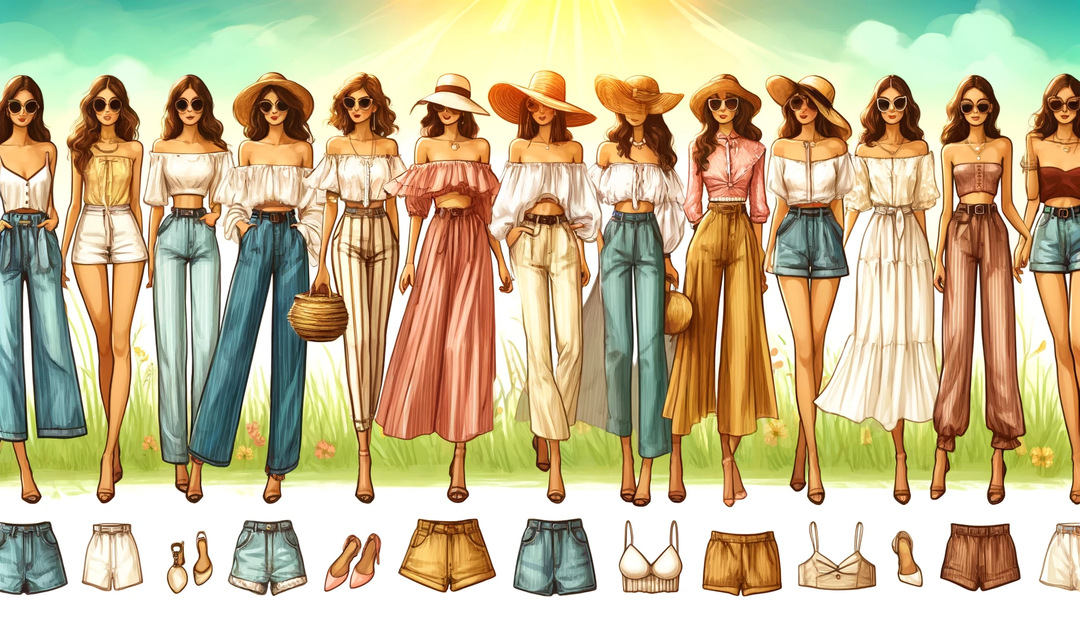Packing for a vacation should be exciting, not stressful. Yet, many travelers find themselves frustrated with uncomfortable, wrinkled, or impractical clothes once they reach their destination. The secret to a smooth trip? Choosing the right vacation fabric types for your travel outfit essentials. In this guide, we’ll explore vacation outfit ideas, the science behind comfortable travel wear, and the best breathable clothing for every climate and activity.
This comprehensive guide will explore why fabric selection matters so profoundly for travel, which materials you should embrace or avoid, and how to build a vacation wardrobe that supports your comfort without compromising on style or sustainability.
Why do my vacation clothes always feel uncomfortable during travel?
Many travelers find themselves fidgeting, overheating, or feeling sticky in their vacation clothes. The main reasons are:
-
Lack of Breathability: Fabrics that trap heat and sweat can make even the shortest trip feel long and uncomfortable.
-
Poor Moisture Management: Materials that don’t wick moisture away from your skin leave you feeling damp and clammy.
-
Wrinkle-Prone: Some fabrics crease easily, making you look and feel rumpled after hours in transit.
-
Odor Retention: Certain synthetics can trap odors, making clothes feel stale after a day of sightseeing.
-
Bulk and Weight: Heavy fabrics add unnecessary weight to your luggage and can feel restrictive during travel.
Common Comfort Complaints
Based on consumer research from travel forums and surveys, these are the top fabric-related complaints travelers report:
-
Poor moisture-wicking capabilities leave you feeling damp and uncomfortable
-
Rough seams and abrasive fabrics become increasingly problematic during extended wear
-
Arriving at your destination with clothing that looks slept-in despite careful packing
-
Fabrics that trap bacteria and sweat, requiring frequent washing during your trip
-
Materials that are either too warm or not insulating enough for changing environments
What fabrics should I avoid for long flights and road trips?
Certain fabrics are notorious for making travel less pleasant. Here’s what to skip:
-
100% Cotton: While soft, cotton absorbs moisture and dries slowly, which can leave you feeling damp and uncomfortable in humid or sweaty conditions.
-
Cheap Synthetics: Low-quality polyester or acrylic can feel hot, trap odors, and lack breathability.
-
Heavy Denim: Jeans are durable but bulky, slow to dry, and not ideal for sitting long hours.
-
Pure Linen (for some): Although breathable, linen wrinkles easily and may not look fresh after hours in a suitcase or airplane seat.
-
Wool (except Merino): Regular wool can be itchy and heavy, though Merino wool is a notable exception for travel.
Pro Tip: Modern blends, like polyester-cotton or viscose-polyester, offer wrinkle resistance and improved breathability, making them better for travel than pure synthetics or heavy natural fiber.
Which Fabrics Work Best in Humid Tropical Destinations?
Tropical vacations present unique challenges for your wardrobe, with humidity levels often exceeding 80% and temperatures sustaining above 85°F (30°C). Choosing the right breathable clothing can make the difference between tropical delight and vacation misery.
Linen
The unique structure of linen fibers creates a highly breathable fabric with exceptional airflow that feels notably cooler against skin than most alternatives. Scientific testing shows linen can feel up to 5°F cooler than cotton in identical conditions, a difference you'll appreciate during long days exploring tropical destinations.
What makes linen particularly valuable in humid environments is its natural moisture absorption capacity—it can absorb up to 20% of its weight in moisture before feeling wet against skin. This property creates a natural wicking effect that draws sweat away from your body.
Modal
What makes modal exceptional is its remarkable moisture-handling capabilities—it absorbs up to 50% more moisture than standard cotton while maintaining a dry feel against your skin. While ordinary fabrics quickly become damp and uncomfortable, modal efficiently draws moisture away from your body and distributes it across the fabric's surface for faster evaporation.
Modal's natural resistance to bacterial growth significantly reduces odor development even after multiple wearings in humid environments, a practical benefit that means you can pack fewer items and wear them more confidently between washes. This combination of performance qualities makes Modal an ideal foundation for your tropical travel outfit essentials.
Bamboo Terry
The natural structure of bamboo fibers creates a fabric with inherent antimicrobial properties that actively resist mold and mildew development—a significant advantage in environments where dampness can quickly lead to musty odors in clothing.
What truly distinguishes Bamboo Terry in tropical settings is its superior moisture-wicking capability. The fabric pulls moisture away from your body more efficiently than most natural fibers, creating a microclimate between your skin and clothing that feels noticeably cooler.
This wicking action works continuously throughout the day, helping maintain comfort during tropical sightseeing, beach visits, or jungle exploration. Bamboo Terry also provides natural UV protection with ratings up to UPF 15, adding a layer of sun safety without additional chemical treatments.
Supima Cotton Blends
While standard cotton often performs poorly in tropical conditions, supima cotton blends offer dramatically improved performance that makes them excellent choices for humid destinations. The superior quality begins with the longer fibers used in Supima cotton, which create a more breathable fabric structure that allows greater airflow against your skin. This enhanced breathability becomes particularly valuable in tropical climates where air circulation plays a crucial role in evaporating sweat and maintaining comfort.
Cotton-Lycra Blends
What makes cotton-lycra particularly suitable for tropical environments is its remarkable shape recovery even in high humidity. Standard cotton tends to stretch and sag when exposed to moisture and humidity, leading to baggy knees in pants or stretched-out shoulders in tops. Cotton-Lycra blends resist this dimensional change, helping your vacation outfit ideas maintain their intended fit and appearance throughout active days
By selecting these specific fabric types for your tropical vacation wardrobe, you'll experience noticeable improvements in comfort that allow you to fully enjoy your destination rather than feeling distracted by clothing discomfort.
Space-Saving Fabric Choices for Efficient Travel
Packing light is an art-and the right fabrics make it easy. Here’s what to look for in travel outfit essentials:
-
Lightweight: Fabrics like rayon, bamboo, and polyester blends pack down small and weigh less.
-
Wrinkle-Resistant: Polyester, nylon, and spandex blends keep you looking fresh.
-
Quick-Drying: Merino wool, bamboo, and technical polyesters dry overnight, perfect for hand-washing on the go.
-
Multi-Functional: Choose pieces that can be dressed up or down, like a linen shirt dress or bamboo tee.
Packing Tip: Roll your clothes instead of folding to save space and minimize wrinkles. Use packing cubes for organization and compression.
Destination-Based Fabric Selection: Matching Materials to Environments
|
Destination |
Recommended Fabrics |
Why They Work |
|
Tropical/Humid |
Linen, Bamboo, Rayon, Tencel |
Maximum breathability, moisture-wicking |
|
City/Urban |
Cotton blends, Polyester, Tencel |
Easy care, wrinkle resistance, stylish |
|
Cold/Variable |
Merino Wool, Nylon, Polyester |
Warmth, odor resistance, quick drying |
|
Beach/Resort |
Bamboo, Linen, Rayon, Silk |
Lightweight, soft, elegant, easy to pack |
|
Adventure/Active |
Polyester, Nylon, Spandex |
Durability, stretch, moisture management |
Tropical Fabric Performance
A comparative study of travelers to Southeast Asian destinations found significant differences in comfort ratings based on fabric choices:
|
Fabric Type |
Comfort Rating (1–10) |
Quick-Dry Time |
Odor Resistance |
Wrinkle Performance |
|
Modal |
9.2 |
Excellent |
Excellent |
Very Good |
|
Bamboo Blends |
8.7 |
Very Good |
Excellent |
Good |
|
Performance Cotton |
7.9 |
Good |
Good |
Moderate |
|
Standard Cotton |
5.3 |
Poor |
Poor |
Poor |
|
Polyester |
4.8 |
Good |
Poor |
Good |
Scientific Advantages of Moisture-Wicking Fabrics
Humidity amplifies the importance of proper moisture management. Research on fabric performance in tropical conditions reveals that:
-
Fabrics with effective moisture-wicking properties can reduce perceived temperature by up to 7°F (4°C) compared to non-wicking alternatives
-
The cooling effect of proper evaporation can decrease core body temperature discomfort by up to 30%
-
Antimicrobial properties in certain fibers can reduce the need for washing by up to 50% during tropical vacations
NeceSera's proprietary fabrics like Lushknit and Luxflo were developed specifically to address these concerns, offering 15-20% better humidity performance than standard retail alternatives according to independent testing.
Also Read - Top Co-ord Sets for Your Next Vacation
Conclusion
The journey to perfect vacation outfit ideas begins long before your trip—it starts with understanding the profound impact fabric choices have on your travel experience. By selecting the right vacation fabric types, you transform not just how you look in photos, but how you feel throughout your adventures.
By focusing on breathable clothing and smart vacation fabric types, you can build a travel wardrobe that keeps you cool, confident, and stylish on every adventure. From the tropics to the mountains, matching your fabrics to your destination ensures you’re always prepared-without overpacking or sacrificing comfort.
FAQs
Q1. What is the best fabric for traveling?
Modal stands out as the top performer for travel due to its exceptional moisture management, wrinkle resistance, and lightweight properties. Other excellent choices include bamboo-based fabrics for their antimicrobial qualities, technical cotton blends for familiar comfort without typical cotton problems, and modern performance linen blends that combine cooling properties with improved wrinkle resistance.
Q2. Which clothes is best for Travelling?
The most effective travel wardrobe centers around versatile, multi-functional pieces in premium fabrics that can be mixed and matched across different settings. Focus on layering pieces like quality t-shirts, a versatile dress or button-up shirt, comfortable bottoms with stretch, and a lightweight outer layer—all in coordinating colors that can create multiple outfit combinations from minimal pieces.
Q3. Which fabric is best for resort wear?
Resort environments call for fabrics that transition seamlessly between poolside relaxation and evening dining while handling humidity gracefully. Modal and Modal blends excel in resort settings by maintaining their luxurious appearance despite humidity, while performance linen blends offer natural cooling with reduced wrinkling, and Supima cotton blends provide familiar comfort with superior moisture management.
Q4. What is the best fabric for hot weather?
For extreme heat, look to fabrics with exceptional breathability and moisture management properties. Modal creates a cooling effect through superior evaporation, while bamboo-based fabrics remain naturally cooler to the touch than most alternatives. Modern linen blends offer traditional cooling benefits (up to 5°F cooler than cotton in identical conditions) with significantly reduced wrinkling.
Q5. How can I prevent wrinkles in my travel clothes?
Choose naturally wrinkle-resistant fabrics like Modal or technical blends that resist creasing even after being packed for days. Roll rather than fold garments when packing to reduce hard creases, and consider packing cubes to minimize movement within your luggage. For items that do wrinkle, hanging them in a steamy bathroom often releases creases without the need for an iron.








